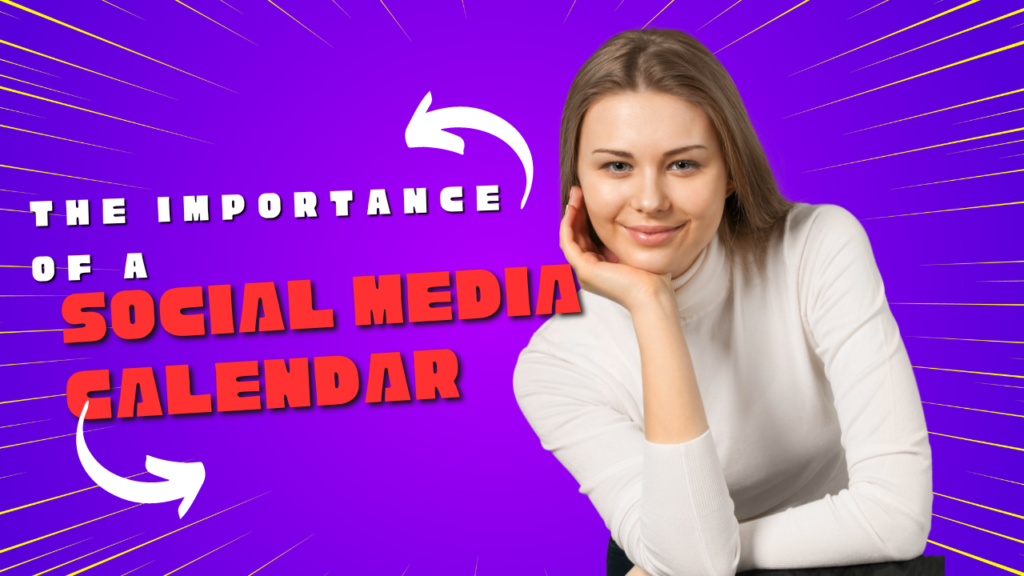
The Importance of a Social Media Calendar in Digital Marketing
Introduction
In the bustling world of digital marketing, staying organized is crucial. One of the best tools to help you stay on track is a social media calendar. This nifty tool isn’t just for planning; it’s a strategic asset that can elevate your marketing efforts to new heights. But what exactly is a social media calendar, and why is it so important? Let’s dive in and find out.
Understanding a Social Media Calendar
What is a Social Media Calendar?

A social media calendar is essentially a schedule that outlines what and when you will post on your social media platforms. Think of it as your blueprint for maintaining a consistent and engaging online presence. It includes everything from blog posts and tweets to Instagram stories and LinkedIn updates.
Types of Social Media Calendars
There isn’t a one-size-fits-all when it comes to social media calendars. They can be as simple as a spreadsheet or as sophisticated as a dedicated software solution. Some businesses prefer daily calendars, while others might opt for weekly or monthly plans. The choice depends on your content volume and posting frequency.
Why You Need a Social Media Calendar
Consistency in Posting
One of the cardinal rules of social media marketing is consistency. A social media calendar ensures that you are posting regularly, keeping your audience engaged and your brand top-of-mind.
Time Management and Efficiency
By planning your content in advance, you can allocate specific times for content creation, scheduling, and monitoring. This approach not only saves time but also reduces the stress of last-minute postings.
Read More : Digital Marketing in the Health Industry 2024
Content Variety and Balance
A well-structured calendar helps you maintain a balanced mix of content. This balance includes promotional posts, informational content, and engaging material that resonates with your audience. It ensures you don’t bombard your followers with repetitive or overly promotional content.

Key Components of a Social Media Calendar
Content Themes
Having themes for different days or weeks can help streamline your content creation process. For example, you might have “Motivation Monday” or “Tech Tip Tuesday.” These themes provide a consistent framework for your posts.
Posting Frequency
How often should you post? This depends on your audience and the platform. For instance, Twitter might require multiple posts per day, while LinkedIn might be fine with a few updates per week. Your calendar should reflect these nuances.
Platform Specifics
Each social media platform has its own best practices. Your calendar should take into account the unique features and audience behavior of each platform, whether it’s Instagram’s visual focus or LinkedIn’s professional tone.
How to Create a Social Media Calendar
Identifying Your Goals
Start by outlining what you want to achieve with your social media efforts. Are you looking to increase brand awareness, drive traffic to your website, or boost engagement? Your goals will guide your content strategy.
Knowing Your Audience
Understanding who your audience is and what they like is crucial. Use analytics and insights from your social media platforms to tailor your content to their preferences and behaviors.
Choosing the Right Tools
There are numerous tools available to help you create and manage your social media calendar. Selecting the right one depends on your specific needs and budget.
Popular Tools for Creating a Social Media Calendar
Hootsuite
Hootsuite is a comprehensive social media management tool that allows you to schedule posts, monitor engagement, and analyze performance across multiple platforms.
Buffer
Buffer offers a simple and intuitive interface for scheduling posts and tracking their performance. It’s particularly useful for small businesses and individual marketers.
Trello
While Trello is primarily a project management tool, it can be adapted to create a visual social media calendar. Its board and card system makes it easy to organize and track your content.
Planning Your Content
Brainstorming Ideas
Generate a list of content ideas that align with your goals and audience interests. Don’t be afraid to get creative and think outside the box.
Creating a Content Mix
A diverse content mix keeps your audience engaged. Include a variety of content types such as articles, videos, infographics, and user-generated content.
Scheduling Posts
Once you have your content ready, schedule it according to your calendar. Make sure to consider the optimal times for posting on each platform to maximize reach and engagement.
Optimizing Your Social Media Calendar for SEO
Keyword Research
Incorporate relevant keywords into your social media posts to improve their searchability. This practice can help attract new followers and drive traffic to your website.
Incorporating Hashtags
Hashtags are powerful tools for increasing the visibility of your posts. Use popular and relevant hashtags to reach a broader audience.
Timing Your Posts
Posting at the right time can significantly impact your engagement rates. Use analytics to determine when your audience is most active and schedule your posts accordingly.
Benefits of a Well-Planned Social Media Calendar
Increased Engagement
Regular and varied posting keeps your audience interested and engaged. A well-planned calendar ensures that you consistently provide valuable content.
Better Brand Awareness
Consistent and strategic posting helps build your brand’s presence on social media. Over time, this increased visibility can lead to greater brand recognition and loyalty.
Enhanced Customer Loyalty
By providing valuable and engaging content, you can build a loyal following. Your audience will appreciate your efforts and be more likely to engage with your brand.
Challenges in Maintaining a Social Media Calendar
Adapting to Trends
The social media landscape is always changing. Keeping up with trends and adapting your content accordingly can be challenging but is essential for staying relevant.
Managing Multiple Platforms
Each social media platform has its own set of rules and best practices. Managing multiple accounts can be time-consuming and requires careful planning.
Ensuring Content Quality
Consistency is important, but so is quality. It can be challenging to maintain high-quality content on a regular basis, especially if resources are limited.
Tips for Effective Social Media Calendar Management
Regular Updates
Your social media calendar should be a living document that you update regularly. This approach allows you to adapt to changes and keep your content fresh.
Analyzing Performance
Regularly review your social media performance to see what’s working and what isn’t. Use this data to refine your strategy and improve future content.
Staying Flexible
While it’s important to have a plan, you should also be prepared to make changes as needed. Flexibility is key to responding to unexpected events or new opportunities.
Case Studies: Success Stories
Example 1: A Small Business
A local bakery used a social media calendar to plan their posts around seasonal events and promotions. This strategy helped them increase their following and boost sales during peak times.
Example 2: A Large Corporation
A multinational tech company implemented a social media calendar to streamline their global marketing efforts. This approach ensured consistent messaging across different regions and time zones.
Common Mistakes to Avoid
Overposting or Underposting
Finding the right balance is crucial. Overposting can overwhelm your audience, while underposting can make your brand seem inactive.
Ignoring Analytics
Data is your best friend. Ignoring analytics means missing out on valuable insights that can help improve your social media strategy.
Lack of Engagement
Social media is a two-way street. Simply posting content isn’t enough; you need to engage with your audience by responding to comments and messages.
Future Trends in Social Media Calendars
AI and Automation
Artificial intelligence and automation tools are becoming increasingly popular for managing social media calendars. These technologies can help you optimize posting times and create personalized content.
Integration with Other Marketing Tools
Integrating your social media calendar with other marketing tools can provide a more comprehensive view of your marketing efforts and improve overall efficiency.
Real-Time Content Updates
With the rise of real-time content, it’s important to have a flexible calendar that allows for quick updates. This capability ensures that you can stay relevant and responsive to current events.
What is the best tool for a social media calendar?
The best tool depends on your specific needs and preferences. Hootsuite, Buffer, and Trello are all popular options with different features.
How often should I update my social media calendar?
It’s best to review and update your calendar regularly, at least once a month, to ensure it remains relevant and effective.
Can a social media calendar improve my SEO?
Yes, by incorporating keywords and hashtags and optimizing your posting times, a social media calendar can help improve your search engine visibility.
Is a social media calendar suitable for small businesses?
Absolutely! Small businesses can greatly benefit from the organization and efficiency that a social media calendar provides.
How do I handle last-minute changes to my social media calendar?
Stay flexible and be prepared to make adjustments as needed. Use your calendar as a guideline but allow room for spontaneity and real-time updates.
Conclusion
A social media calendar is an indispensable tool for any digital marketing strategy. It helps you stay organized, maintain consistency, and engage your audience effectively. By implementing a well-planned social media calendar, you can elevate your brand’s online presence and achieve your marketing goals.